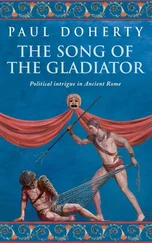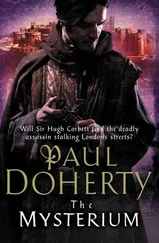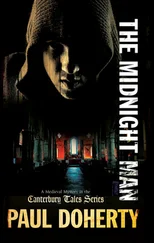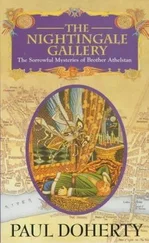Paul Doherty - The Cup of Ghosts
Здесь есть возможность читать онлайн «Paul Doherty - The Cup of Ghosts» весь текст электронной книги совершенно бесплатно (целиком полную версию без сокращений). В некоторых случаях можно слушать аудио, скачать через торрент в формате fb2 и присутствует краткое содержание. Год выпуска: 0101, Жанр: Исторический детектив, на английском языке. Описание произведения, (предисловие) а так же отзывы посетителей доступны на портале библиотеки ЛибКат.
- Название:The Cup of Ghosts
- Автор:
- Жанр:
- Год:0101
- ISBN:нет данных
- Рейтинг книги:5 / 5. Голосов: 1
-
Избранное:Добавить в избранное
- Отзывы:
-
Ваша оценка:
- 100
- 1
- 2
- 3
- 4
- 5
The Cup of Ghosts: краткое содержание, описание и аннотация
Предлагаем к чтению аннотацию, описание, краткое содержание или предисловие (зависит от того, что написал сам автор книги «The Cup of Ghosts»). Если вы не нашли необходимую информацию о книге — напишите в комментариях, мы постараемся отыскать её.
The Cup of Ghosts — читать онлайн бесплатно полную книгу (весь текст) целиком
Ниже представлен текст книги, разбитый по страницам. Система сохранения места последней прочитанной страницы, позволяет с удобством читать онлайн бесплатно книгу «The Cup of Ghosts», без необходимости каждый раз заново искать на чём Вы остановились. Поставьте закладку, и сможете в любой момент перейти на страницу, на которой закончили чтение.
Интервал:
Закладка:
At the high altar the king and queen offered a pound of gold in the form of a statue of Edward the Confessor. The choir and sanctuary blazed with the light of hundreds of torches and candles which dazzled in the rich glow of the thickly embroidered tapestries covering walls, pillars, lecterns, chairs and tables. At either side of the steps leading up to the choir and sanctuary stood the great oaken pavilions decorated with embroidered cloths, winter roses and greenery. Casales, his helmet between his feet, stood in the one on the left, Baquelle on the right. They looked out on to an abbey nave packed with visiting dignitaries, the principal ones clustering up the steps to witness the coronation, which was carried through to the blaze of trumpets, heady gusts of incense and the roar of the acclamation ‘Fiat, Fiat, Vivat Rex’, followed by the antiphon ‘Unxerunt Salamonem’ — ‘They Anointed Solomon’. Bishop Woodlock of Worcester performed the holy unction. The king himself lowered the crowns, first onto his head then on to Isabella’s. She acted serenely throughout the proceedings, lips and eyes crinkled in happiness, a faint smile brightening her face, a vision of joy amidst the grim muttering which permeated the coronation. The anger of the earls ran high against the honour and precedence accorded to Gaveston, who not only held the crown but was given the special privilege of fixing one of the royal spurs to the king’s buskined foot. Beneath the chanting and the acclamations rose a low chorus of protest from a sea of angry, hot-eyed noblemen whose fingers kept falling to empty scabbards; in other circumstances daggers and swords would have been drawn. Who says the future cannot be predicted by signs and omens? The coronation of Edward II was the herald for the disasters to follow: a day of anger, resentment, jealousy, arrogance and finally murder.
The coronation ended. The royal party and its entourage were processing down the nave when the acclamations and singing were drowned by a violent crash behind us, followed by piercing screams and shouts. The earl marshal signalled us to continue but Isabella caught my eye and indicated that I should go back to investigate the cause of the rising clamour. A great crowd was gathering to the right of the sanctuary steps. Clouds of dust now mingled with the drifting tendrils of candle smoke and incense. Above the crowds I glimpsed a tangle of timbers, twisted greenery and cloths. People were pressing in. A woman, Baquelle’s wife, was screaming hysterically. Rossaleti summoned men-at-arms to force a way through the dignitaries, black-robed monks and soldiers. Already Casales and Sandewic were pulling at the heavy timbers but there was nothing to be done. The entire wooden pavilion housing Baquelle had splintered and collapsed. Its side-walls had tumbled outwards, and the heavy oaken beams across the top, some two yards above Baquelle’s head, had crashed down, crushing the hapless knight in his armour, burying him under their massed weight. Only a hand stuck forlornly out.
Casales, stripped of most of his dress armour, imposed order, telling the men-at-arms to drive away the crowds. He hastily summoned a troop of workmen, who removed the heavy beams. Underneath sprawled Baquelle, his skull crushed, parts of his body armour digging deep into his flesh. The dead knight’s head and face were drenched in blood, his finery stained and torn. He was stripped of his armour and laid out on a palliasse brought from the abbey infirmary, a tangled, bruised and bloodied mass of flesh. A priest monk crouched over the corpse, swiftly anointing it, whispering into the dead man’s ear the shriving words of absolution. Other brothers tried to console Baquelle’s family. The corpse was hastily removed, the abbey emptied. The carpenters and craftsmen, agitated and worried, clustered to discuss what had happened. I glimpsed Demontaigu standing by a pillar, almost hidden in the half-light. He raised a hand and moved away. Rossaleti was asking Casales what had happened, but the knight just shook his head.
‘I was standing on guard,’ he declared. ‘The royal party left the sanctuary. Come!’ He included me in his invitation and led us across to his own oak pavilion. In size it was about a yard and half deep, its width was just over two yards and it stood about four yards high. A long rectangle of polished dried oak poles cut in two, it had a narrow cushioned seat at the back, the two sides and back being held most securely by flat wooden slats fastened inside. A master craftsman joined us and explained how the top poles were kept in place by joists reinforced with glue. Casales declared that, once the royal party had passed, Baquelle, exhausted from standing, must have sat down on the seat. He was dressed in plate armour and his weight, leaning against the back, must have caused the top to spring loose and collapse.
Rossaleti had his answer, so he left; Casales was equally impatient to go to seek an audience with the king to inform him of the news. I stayed. I’d glimpsed the suspicion in the master craftsman’s eyes as his colleagues had drifted away to whisper in the shadows. I had a few words with the master craftsman then went to pray in the Lady Chapel with its statue of the Virgin Queen holding the Divine Child, beneath that, in a jewelled case, the abbey’s great relic, a girdle cord once worn by Christ’s mother. I stared at that, half listening to the nave empty. I muttered an Ave but my mind drifted back to Monsieur de Vitry’s house. I heard the distant sounds of trumpets from the celebrations in the Great Hall where the feasting had already begun. I ignored them as I recalled that dire day, fleeing from my own killing. My eyes grew heavy.
‘Mistress, mistress?’ The master craftsman stood in the entrance to the Lady Chapel. I went out to meet him. He handed over a piece of wood. ‘An accident,’ he muttered. I studied the piece of wood, cut clean from the rest. ‘I did that, you see, mistress.’ The master craftsman kept out of the light. ‘The pavilion was fashioned out of oaken poles split down the middle. The rounded part faced the outside, the smooth and flat for the inside; long poles for the three sides, shorter ones for the top kept in place by joists, sprouting like the protruding fingers of a hand into the prepared spaces.’ He explained how the side poles were glued together and reinforced by oaken strips; the ones across the top depended only on the joists and glue as it had been important not to impose too much weight.
‘What happened?’ I asked.
‘Some of the joists at the top must have snapped or slid out. Sir John, God rest him, was a heavy man in plate armour. If he sat down or leaned against the side, that might have weakened the structure. Mistress, those poles across the top are of heavy oak; once loosed, they would drop with all the power of a falling war club.’
‘How many joists were there?’ I asked. ‘Surely there must have been many? What, two on each pole, and there were four or five of those across the top.’
The man just shrugged and looked longingly over his shoulder at his comrades.
‘What was the cause?’ I asked softly.
‘Come and see.’ He took me back to the sanctuary steps. I must have been so absorbed with my own thoughts I hadn’t heard them lower the second pavilion, the one Casales had used. It now lay face down before the steps. The master craftsman brought a taper.
‘They were left over there,’ he explained, pointing across to the dark-shrouded transepts, ‘until this morning, then carried across here, erected and decorated. We thought it would be safe.’
In the light of the taper I examined the top of the wooden pavilion. Nothing more than half-poles fitted in between the sides and the back. The master craftsman’s agitation increased. I grasped the taper, pushing it closer, and gasped in surprise. A gap was evident between the edges of the poles on the two sides as well as the back, wide enough for a knife or thin saw to cut. The glue had also been weakened, some of the joists pulled loose, the gouge marks around the sides clear to see. I whirled round, dropping the taper. The master craftsman glared panic-stricken back.
Читать дальшеИнтервал:
Закладка:
Похожие книги на «The Cup of Ghosts»
Представляем Вашему вниманию похожие книги на «The Cup of Ghosts» списком для выбора. Мы отобрали схожую по названию и смыслу литературу в надежде предоставить читателям больше вариантов отыскать новые, интересные, ещё непрочитанные произведения.
Обсуждение, отзывы о книге «The Cup of Ghosts» и просто собственные мнения читателей. Оставьте ваши комментарии, напишите, что Вы думаете о произведении, его смысле или главных героях. Укажите что конкретно понравилось, а что нет, и почему Вы так считаете.












